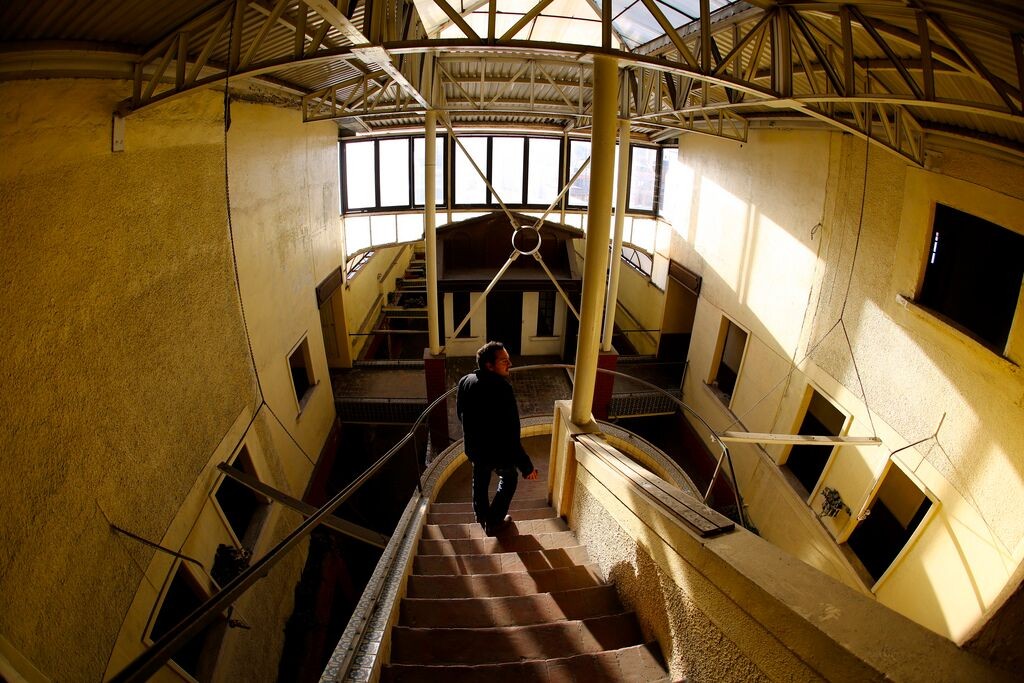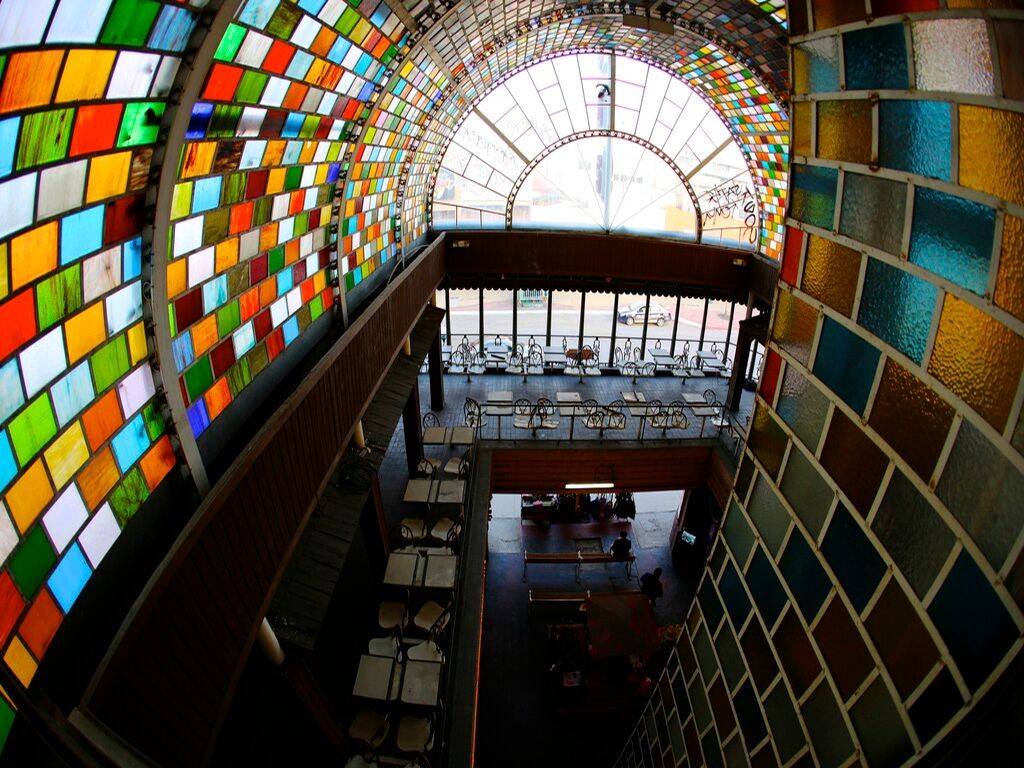
CF: Tell us a bit about Reactivando Espacios. When did you come up with the concept and what were some of you initial projects?
I’ve always felt very sensible towards architecture (or the architectural space) in general, but I started to really experience it in Tijuana’s downtown district where there were many abandoned buildings during 2008-2011.
I felt very attracted to the stories behind historical buildings that weren’t being conserved and were being forgotten instead, I also found it amusing that such aesthetic was generated in such a controversial city like Tijuana. I figured all of this had an historical, social, and political explanation. So I started to explore these buildings more; cinemas, alleys, arcades, shopping malls, theatres, housing and our previous project and probably the one that I have learned the most out of: The Mexicoach building, an abandoned bus station that we occupied for 2 years and was recently demolished. Our project was born to serve as an initiative that transforms unused buildings into complex functional spaces, by trying to understand these spaces and the people that were part of them. This has led me to experiment the city as a laboratory by contemplating situations that are generated in organic ways in every corner.
I think that all of these situations need a proper narrative, not only the one generated by conventional media. Documentary and video have been very important in our operating process. Now, we have found a way of configuring or transforming abandoned sites or buildings into vibrant spaces, but we also strive to respect the true vocation of a space. If a building’s vocation is to stay as a ghost or as a ruin, we try to contemplate it and portray it, not all of these sites should be touched, some deserve to stay as they are.
CF: What have been some of the challenges faced on your various projects?
Of course money will always be an issue, not many people think about re-investing in an unused building, because most of them do not see the potential their buildings have, or they do not understand the social impact these spaces can generate if given the proper link to the city and a specific community. We have found ways to make our projects very sustainable. Every space has a different approach, a different issue, a different owner(s). Our job is to understand the context so we can hack the same problem that brought this site into decay and convert it into a fully vibrant space that responds to its economic and cultural surrounding. In order for this to happen we need to tell the right story, that’s why the narrative aspect of our job is very important in the process.
“I hope this project has been one of many independent efforts to have helped detonate an awareness of controversial & stigmatic cities”
CF: Why do you feel it’s important to rediscover old and disused buildings? What sort of values do you find in them that you can’t find in newer structures?
I believe that you can read a city by its architecture. I also believe architecture has the power to transform, if I live in a city where abandoned sites or buildings exist, it can mean that there is a certain urban cancer, but it can also mean opportunity: a chance to transform a context and to make your own version of a city. A city that that profits from its spaces is a smart city, whereas one that does not pay attention to its context has no room in a competitive and globalized world. This may sound very economically oriented, but if you live in a competitive city, art and culture are part of your day to day basis and think that a healthy society needs them to thrive.
I hope RE has been one of the many independent efforts that have helped detonate an awareness of controversial and stigmatic cities, such as Tijuana, the border town that everybody likes to pick on. For me, being close to the border is one of the most amazing creative laboratories a city can offer and nowadays it seems like young people have taken over and the city is in the hands of those who have reclaimed it.

CF: You recently moved to Mexico City, what sparked the move and how do you see the project growing in the near future?
Mexico City is a complex city. For this same reason it has complex problems, which give birth to complex architecture, complex solutions or even complex ruins. There are so many opportunities to transform buildings or to tell different stories with them. As well as so much inspiration coming from all the history and culture that is generated here. After years of experimentation in Tijuana and Central America, I feel we have the tools to come to DF and develop a project that would speak directly to me, but also to the city.
“Our project was born to serve as an initiative that transforms unused buildings into complex functional spaces”
CF: What is your favorite thing about being based in Mexico City?
One of my favorite things to do is to walk. This is how I come up with different ideas and how I bump into so many sites. I love to walk! In Mexico City you can walk as long as you want to and you will keep bumping into the most unusual, bizarre and beautiful places.

CF: In a dream world, how do you see Reactivando Espacios evolving?
I want to make films that experiment with the aesthetic of a city as the main character. I also want to make many more projects that contribute to city-making and to public space, and since I come from a country that is very weak on housing programs for low income families, I would like to contribute to changing that reality by taking different, multidisciplinary approaches.